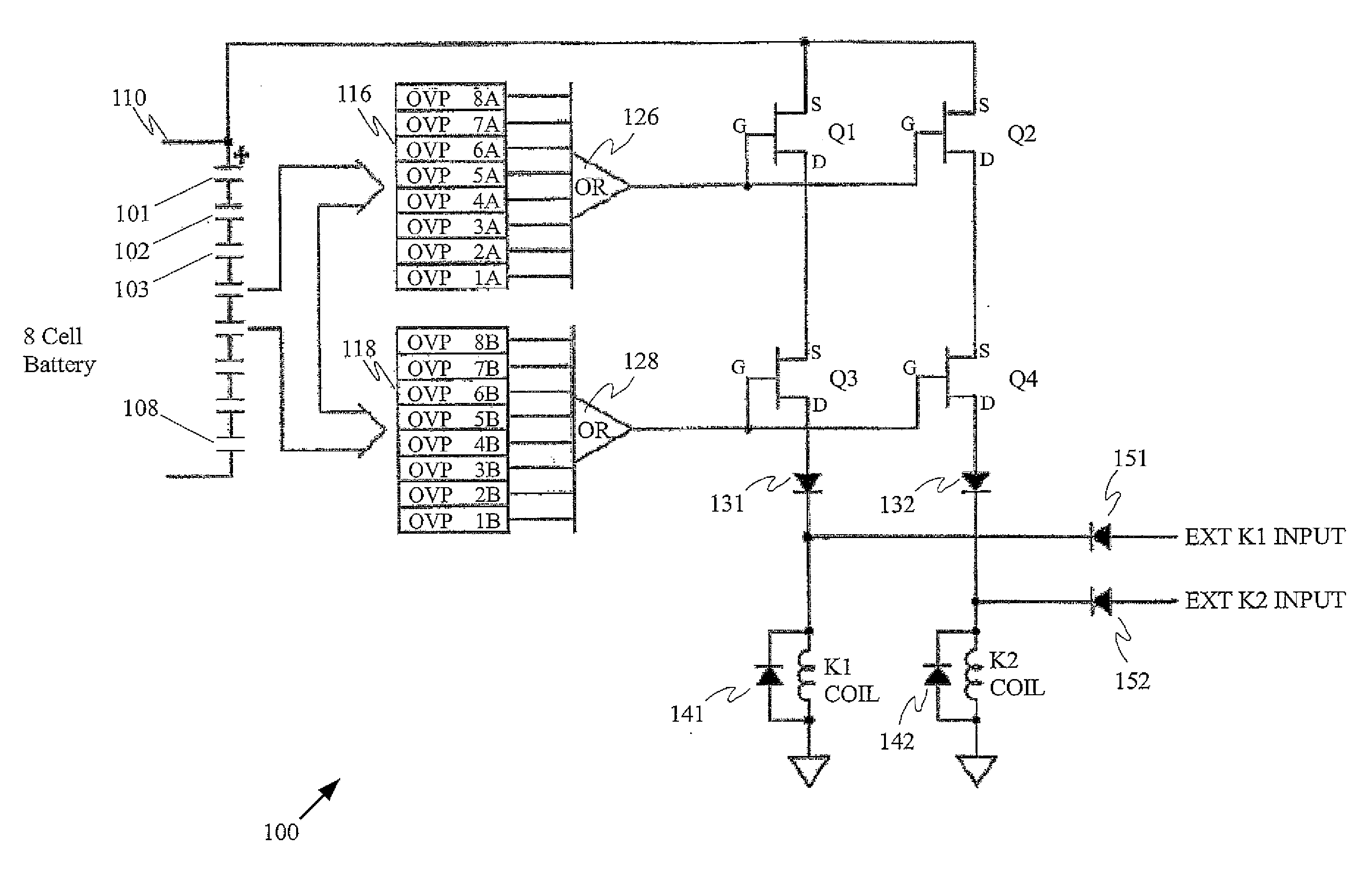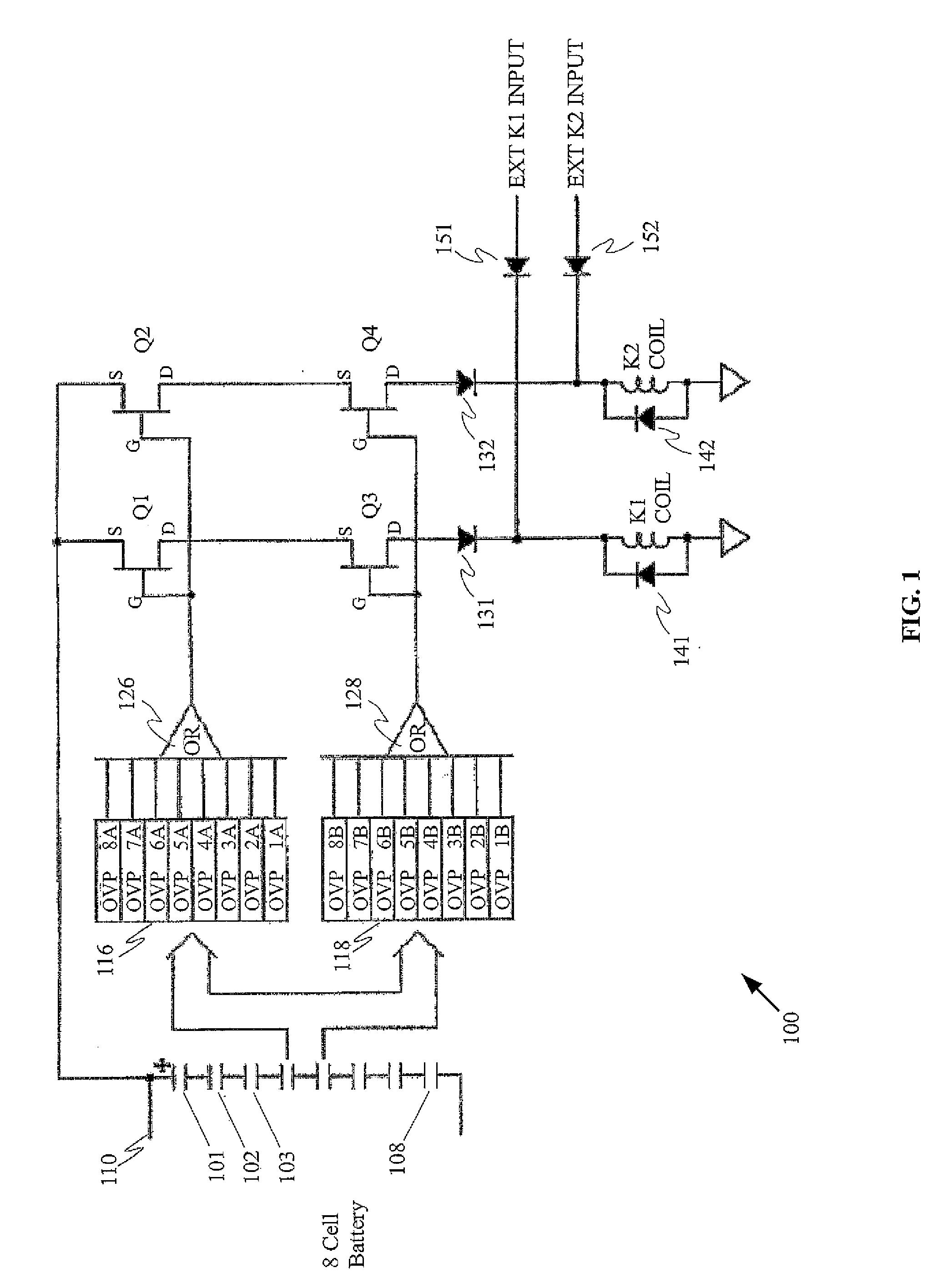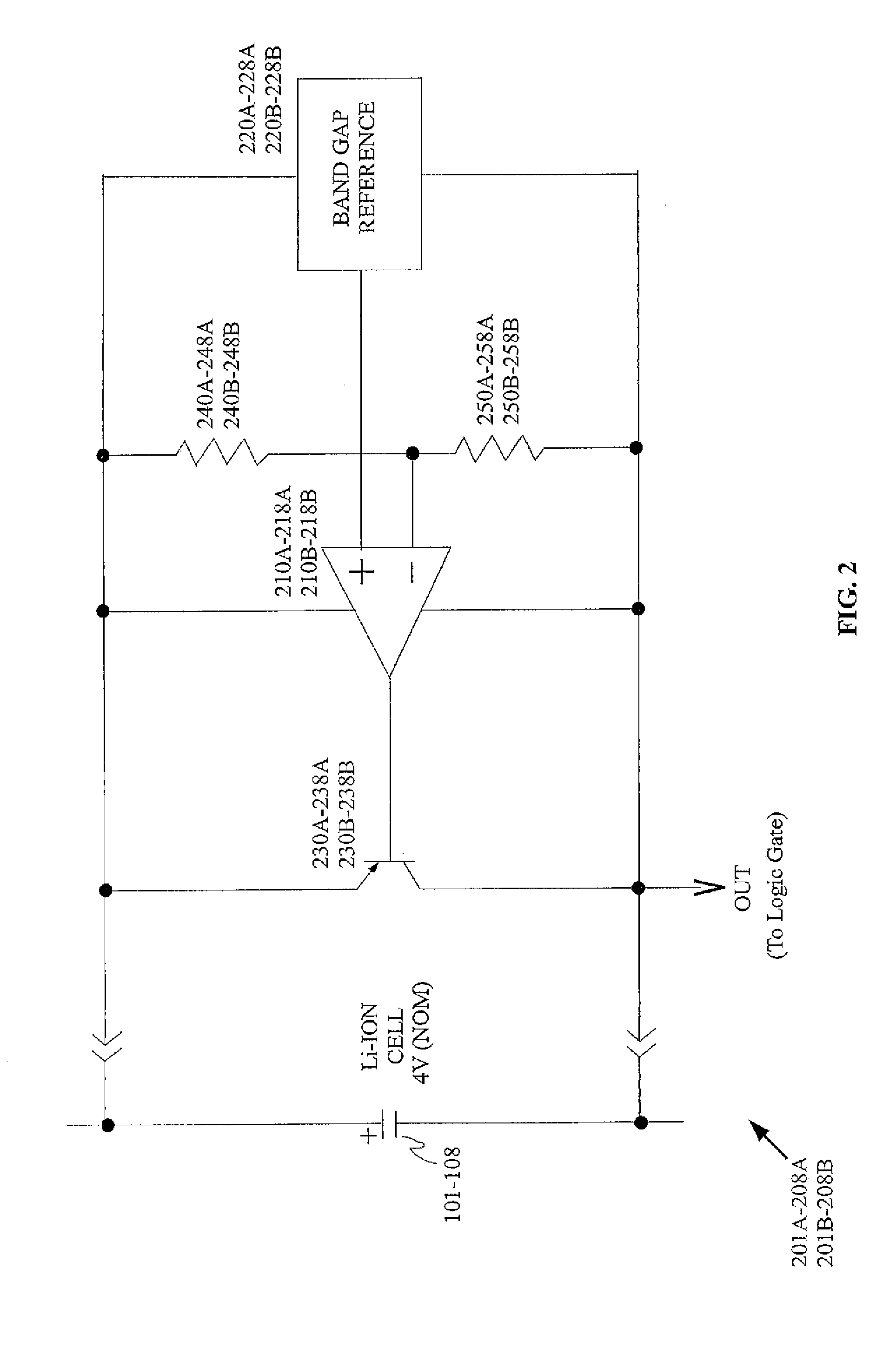Battery Charge Protection System
a battery charge protection and battery technology, applied in the field of electronic circuits, can solve the problems of damage to equipment, maintenance requirements, and li-ion battery performance being negatively impacted,
- Summary
- Abstract
- Description
- Claims
- Application Information
AI Technical Summary
Benefits of technology
Problems solved by technology
Method used
Image
Examples
Embodiment Construction
[0018]While illustrative implementations of one or more embodiments of the present invention are provided below, various changes can be made therein without departing from the spirit and scope of the invention, as described in the appended claims.
[0019]In accordance with at least one embodiment of the present invention, a battery may comprise multiple cells. While a multi-cell Li-ion battery may be utilized for the sake of explanation in the following disclosure, the various embodiments of the present invention are not intended to be limited to use with only this battery technology. The various embodiments of the present invention may be utilized with, for example, any power source or battery technology that may impose similar operational requirements in that the condition of the power source or battery must be regulated in order to maintain performance, or in more extreme cases, to avoid failure.
[0020]In the examples disclosed herein, circuits may be configured to prevent a lithium...
PUM
 Login to View More
Login to View More Abstract
Description
Claims
Application Information
 Login to View More
Login to View More - R&D
- Intellectual Property
- Life Sciences
- Materials
- Tech Scout
- Unparalleled Data Quality
- Higher Quality Content
- 60% Fewer Hallucinations
Browse by: Latest US Patents, China's latest patents, Technical Efficacy Thesaurus, Application Domain, Technology Topic, Popular Technical Reports.
© 2025 PatSnap. All rights reserved.Legal|Privacy policy|Modern Slavery Act Transparency Statement|Sitemap|About US| Contact US: help@patsnap.com



